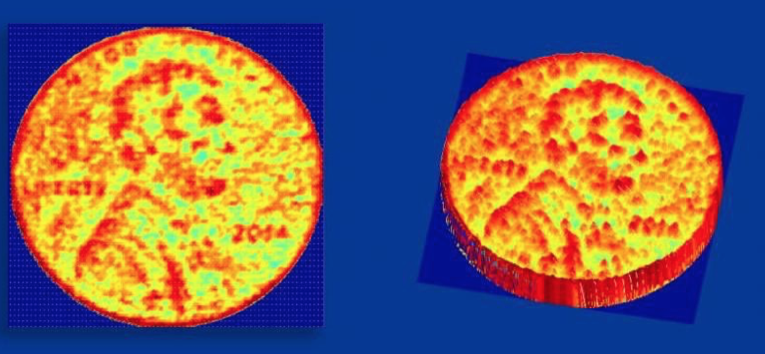A new camera chip that provides “superfine 3-D resolution” has been developed at Caltech.
The research shows promise. The new camera chip would allow a smartphone to take 3D scans, measuring the height, width, and depth of an object using tiny LIDARs that cover an object in laser beams.
The researchers say that the silicon chip nanophotonic coherent imager (NCI) is capable of producing a “replica accurate to within microns of the original object.”

3D images of a penny produced by the NCI chip taken from half a meter away. Credit: Ali Hajimiri/Caltech
The images of the scanned penny above serve as an example of the size of a typical object that the Caltech’s prototype is capable of scanning, however the researchers expect to work on larger objects soon.
The NCI chip could offer affordable 3D imaging in “consumer applications”
3-D imaging has existed for a while now, however, the hardware necessary is typically large, costly, and not used in “consumer applications”.
In contrast, the NCI uses an inexpensive silicon chip less than a millimeter square in size and provides the “highest depth-measurement accuracy of any such nanophotonic 3-D imaging device.”
The chip could fit into any smartphone used today, without the need for any additional hardware.
Ali Hajimiri explains how it works
The work was carried out in the lab of Ali Hajimiri, the Thomas G. Myers Professor of Electrical Engineering in the Division of Engineering and Applied Science.
Hajimiri said:
“Each pixel on the chip is an independent interferometer—an instrument that uses the interference of light waves to make precise measurements—which detects the phase and frequency of the signal in addition to the intensity,”
“By having an array of tiny LIDARs on our coherent imager, we can simultaneously image different parts of an object or a scene without the need for any mechanical movements within the imager,”
“By coupling, confining, and processing the reflected light in small pipes on a silicon chip, we were able to scale each LIDAR element down to just a couple of hundred microns in size—small enough that we can form an array of 16 of these coherent detectors on an active area of 300 microns by 300 microns,”
“The small size and high quality of this new chip-based imager will result in significant cost reductions, which will enable thousands new of uses for such systems by incorporating them into personal devices such as smartphones,”
Source: “New Camera Chip Provides Superfine 3-D Resolution” – Caltech
